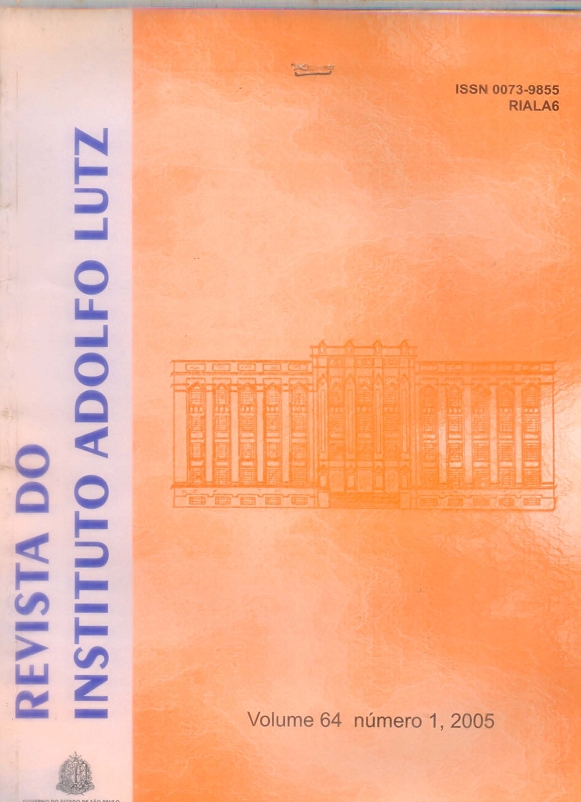Resumo
Comminuted meat products, such as frankfurters, fresh ground sausages and hamburgers are exposed to fraud by the abusive use of protein extensors of the types collagen and soy proteins, used in meat products because of their technological benefits, with reduced processing costs, although they are considered limiting, with regard to essential amino-acids, and producing adverse effects in sensory characteristics. The effective control of addition levels is not properly controlled by the Sanitary Surveillance bodies in Brazil, due to the lack of a validated quantitative analytical methodology for soy proteins and because there are no legal limits to collagen inclusion in meat products. As a contribution to the establishment of maximum contents and effective control of soy proteins and collagen, this project sought: a) to validate intra-laboratorially the official AOAC methodologies in the quantification of hydroxyproline (collagen) and soy proteins in meat products; b) to evaluate proximate composition and technological influence of extensors addiction to Lyoner sausage, and c) to present both sensorial and physicochemical Adolfo Lutz Institute analytical routine results of commercial products like frankfurters, fresh ground sausages and minced beef meat. The formulation and processes were the commercially used for meat emulsion batter, Lyoner sausage and canned emulsion. Beef meat, pork backfat and ice quantities were balanced in order to keep constant the 4.7 humidity: protein ratio as well as the 20% lipid level, replaced with either texturized soy proteins (TSP, Maxten E-100), texturized concentrated (CSP, Proteimax TR-120) and isolated (ISP, Supro 500E) in concentration of 0 to 6% or connective tissue from cooked pork rind or fresh beef connective tissue recovered from cuts obtained by using the Skyner machine, in the range 0 to 15%. The color parameters L* (luminosity), a* (red) and b* (yellow) were measured using a spectrophotometer (Minolta) and the compression hardness was measured using a Texture Analyser (TAXT2i/25). The proximate composition and pH were carried out according to Adolfo Lutz Institute's Analytical Norms. Emulsion stability was reported as percent fat and gelatin released from sterilized canned emulsion. A trained 9-member panel evaluated the sensory attributes using an unstructured 10 cm line scale, following the randomized complete block design, with replicate judgments. Laboratorial consumer acceptance test was carried out using hedonic scale. The results were analyzed by ANOVA and Tukey test (p=0.05). The intra-laboratorially validation of aminoacid hydroxyproline analysis methodology, using FAPAS/MAFF/UK interlaboratorial control canned meat conserve revealed sensibility (quantification limit 0.0075g/100g), precision (CV below 4%), accuracy (recovery rates 90-95%) and operation simplicity. The ELISA immunoassay for soy protein quantification using raw batter emulsion, pasteurized Lyoner sausage and sterilized canned meat added with TSP, CSP and ISP, totalizing 39 treatments, revealed specificity, intra assay precision (CV bellow 6%), calibration curve linearity (r=0.980), sensibility (quantification limit of 0.14g/100g for soy protein in sample); however low accuracy, making necessary the standardization of the method, since the comparative assays using kit ELISATEK allowed rapid aqueous extraction of meat samples into a liquid form suitable for the assay, with higher accuracy results. The utilization of 0 to 6% soy proteins in Lyoner sausage revealed the influence of TSP on red color improvement, with no influence on final product firmness and flavor. Moisture and protein decreased, with slight increase on ash and pH, improving emulsion stability. The use of CSP reduced moisture and red color intensity, resulted no changes in firmness and flavor, increased pH and stabilized the emulsion. The presence of ISP resulted product's decreased red color intensity, firmness and characteristic flavor, with lower moisture level and higher pH, without improvement in the emulsion stability. The utilization of 0 to 15% pork rind and beef connective tissue to Lyoner sausage resulted an increase on toughness and residual connective tissue remaining at the end of mastication, as well as linear increases on collagen levels (r=0.97 and 0.99, respectively) and decrease the emulsion stability. The characteristic flavor and color attributes were decreased by the pork rind replacement, resulting in lower consumer's acceptability. The commercial frankfurter-type sausages revealed collagen median value of 1.7% and commercial fresh ground sausages 1.8%, from total 103 samples analyzed. The routine analysis of beef minced meat revealed appearance alterations due to connective tissue at high levels, presenting collagen median values 123% higher compared with beef minced meat bought in meat stores. Beef connective tissue fibers addition in fresh minced beef meat revealed linear increase in collagen (r=0.986) and fat, and decrease in moisture, ash, pH and red color values, causing lower product acceptance. The formulated hamburger revealed higher firmness, demanding a greater number of mastications and presenting a less intense characteristic flavor.
Este trabalho está licenciado sob uma licença Creative Commons Attribution 4.0 International License.
Copyright (c) 2005 J. C. M. Della Torre
Downloads
Não há dados estatísticos.
